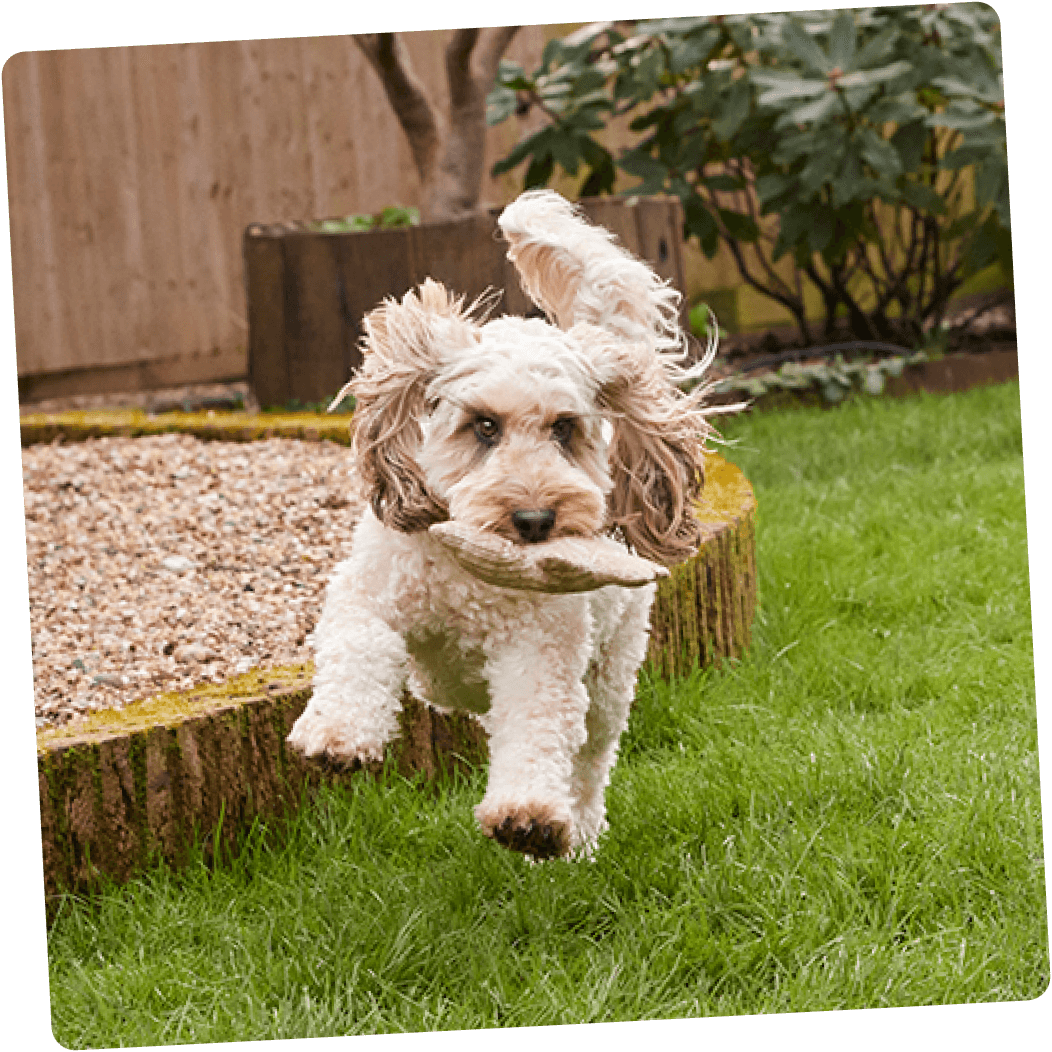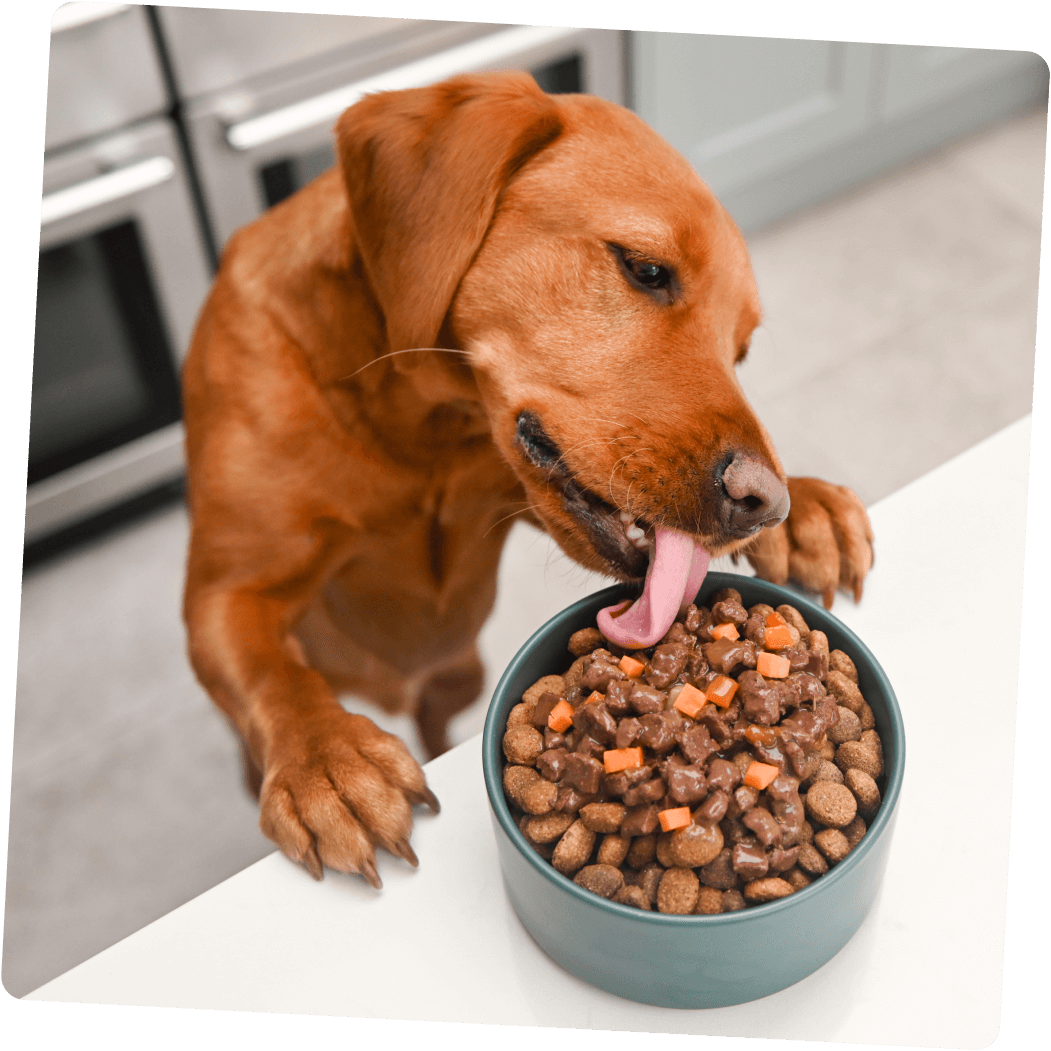‘High in fibre’ is something lots of us look for in our own food. But is it important for our dogs?
Absolutely. Dog food with fibre keeps your best friend healthy on the inside and happy on the outside. Here’s why – and how food made especially for your dog means they’ll always get just enough.

Fibre explained
Like us, dogs can’t actually absorb fibre. In fact, that’s why it’s so important – it helps your dog absorb other nutrients and keeps them feeling full for longer. Fibre also helps your dog form healthy poos – the type that are easy to pick up. And there’s more. Some types of fibre act as food for the good bacteria in your dog’s gut, a great boost for their all-round health.
There are two types of fibre, each with different benefits. Your dog needs both to keep their digestive system in tip-top shape:
Soluble
This type of fibre absorbs water and takes on a gel-like texture. This slows your dog’s digestion and encourages nutrients to absorb at a steady pace. At the same time, it helps prevent spikes and dips in blood sugar.
Insoluble
Fibre that adds bulk to poos and keeps your dog’s digestive system ‘regular’. It also helps keep their anal glands working properly, so you avoid a visit to the vets.

Get the balance right
Most of the ingredients in our kibbles contain soluble and insoluble fibre, but in different proportions. Wheat bran, for example, contains almost all insoluble fibre. But a third of the fibre in beet pulp is the soluble kind.
We carefully balance your dog’s recipe to make sure they get enough of each. And if they can’t have certain fibre-rich foods – like grains – because of a food allergy or intolerance, we’ll include other high-quality sources instead. Sweet potato and beet pulp are some of our favourites.

Go high-fibre
Because a high fibre dog diet keeps your dog feeling full for longer, it’s great for supporting weight loss. We may also recommend a high fibre dog food if your dog is diabetic, because fibre helps to even-out the swings in blood sugar that can happen after eating. But too much fibre can stop your dog absorbing nutrients properly, so we still carefully balance the level to give them enough, within the healthy limit.

Ease digestive upsets
If your dog is suffering from a digestive upset, it could be a sign that the balance of soluble and insoluble fibre in their diet is off. Check with your vet, and if they agree that your dog’s diet could be a factor, ask us for a digestion-improving recipe. We’ll do the rest. For example, soluble fibre can slow down your dog’s digestion and help stop diarrhoea. Prebiotic soluble fibres can boost the good bacteria in your dog’s gut, to help get their digestive system back to normal. And insoluble fibre can ease constipation by helping food move through your dog’s digestive system more efficiently.
FAQs
High-fibre foods for dogs come in dry, wet, or fresh forms. You can find the fibre content listed under the analytical constituents on the food packaging. Look for ingredients like vegetables, cellulose, psyllium or certain cereals such as oats or barley, as these often indicate a higher fibre content. A diet rich in fibre can be really beneficial for managing weight, helping with anal gland issues and supporting dogs with specific digestive sensitivities. If you think your dog might benefit from a higher-fibre diet, get in touch with our nutritional specialists in customer service. They'll be happy to help.
When your dog is struggling with constipation, choosing the right high-fibre food can help, but it's not a one-size-fits-all answer. It's less about just "fibre" and more about the type of fibre. There are a few different kinds: insoluble, soluble, and fermentable, and each works differently in your dog's gut. For constipation, insoluble fibre is generally the most helpful. This is often what you'll find listed as "crude fibre" on dog food labels. Since every dog is unique, the best approach is to contact the food manufacturer directly to ask about the specific fibre types in their food. You can also chat with your vet. They can recommend a food formulated specifically to help with canine constipation and ensure it's the right fit for your furry friend.
Got a pup struggling with constipation or recurring anal gland issues? A lack of fibre could be the culprit. If you're noticing very small, hard poos and difficulty going, a little extra fibre might be just what they need. For these kinds of concerns, we're usually looking for insoluble fibre, which you'll often see listed as 'crude fibre' on food labels.
When you see "crude fibre" on your pet's food label, it refers to the indigestible or insoluble plant-based fibres from ingredients like vegetables or grains. This kind of fibre is fantastic for helping with weight management and can even assist with issues like full anal glands. Just remember, "crude fibre" doesn't tell the whole story. There are other beneficial fibres, like soluble fibre, that aren't included in that particular measurement.
Get expert advice
Tell us about your dog, and we’ll work out the balance of fibre they need to help keep their digestion running like clockwork. Got a question about the fibre in your dog’s recipe? We’re here to help. Get in touch at hello@tails.com.
